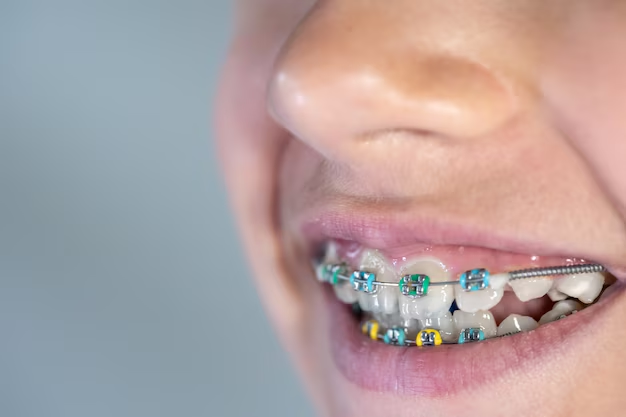Picture this: a young child beams with confidence, showing off a beautiful, straight smile. Behind that smile lies the result of timely orthodontic intervention—a proactive approach that not only improves aesthetics but also sets the foundation for a lifetime of dental health. Early orthodontic treatment has become increasingly important as parents recognize the long-term benefits it can provide, from correcting bite issues to preventing more serious dental problems down the road. But when is the right time to start treatment, and how can early intervention shape a child’s future oral health? In this blog, we’ll explore the significance of early orthodontic intervention, when to start treatment, and how seeking the expertise of orthodontics near me for braces can ensure your child’s smile remains healthy and confident for years to come.
Understanding Orthodontics and Its Importance:
Orthodontics is a specialized branch of dentistry that focuses on diagnosing, preventing, and correcting misaligned teeth and jaws, improving not just aesthetics but overall oral health. While many people associate braces primarily with teenagers, early intervention can be incredibly beneficial for younger children as well. In fact, the American Association of Orthodontists recommends that children have their first orthodontic evaluation by age 7. At this stage, a dentist can assess the growth patterns of the teeth and jaw, identify any potential issues, and provide timely intervention if needed. Early detection of problems such as crowding, improper bite, or jaw misalignment can prevent more severe complications later in life. By starting treatment at the right time, children may experience shorter treatment durations and more effective results, ensuring a healthier, more confident smile as they grow.
Why Early Intervention Matters?
- Preventive Care: Early orthodontic treatment can help identify potential issues before they become more complex and costly to address later. By detecting problems early, orthodontists can implement preventive measures that may mitigate the need for extensive treatment down the line.
- Guiding Growth: Children’s mouths and jaws are still developing, which makes it an ideal time to guide the growth of the jaw and teeth. Early treatment can ensure that the permanent teeth erupt in the best possible position, minimizing the likelihood of future misalignment.
- Addressing Bite Issues: Early intervention can help correct bite problems, such as overbites or underbites, which can lead to difficulties with chewing, speaking, and even breathing. By addressing these issues early, you can prevent further complications and discomfort.
- Boosting Self-Esteem: A beautiful smile is not just about aesthetics; it plays a significant role in a child’s self-confidence. Early orthodontic treatment can improve a child’s smile and self-image, positively impacting their social interactions and overall well-being.
When to Start Treatment?
Identifying the right time for orthodontic intervention involves recognizing the signs that indicate your child may benefit from treatment. Here are some key factors to consider:
Age and Dental Development:
- First Evaluation by Age 7: As mentioned earlier, the first orthodontic evaluation should occur by age 7. At this stage, many children have a mix of primary and permanent teeth, making it easier for orthodontists to assess potential issues.
- Timing for Treatment: Depending on the specific orthodontic concerns, treatment can start as early as age 7 or 8. However, for some children, monitoring may continue until all permanent teeth have erupted, usually around ages 11 to 13.
Signs Your Child May Need Early Intervention:
- Crowded or Crooked Teeth: If your child’s teeth appear crowded or misaligned, it may indicate the need for early intervention.
- Bite Problems: Issues such as an overbite, underbite, or crossbite can cause functional and aesthetic concerns, signaling that it’s time to seek help.
- Difficulty with Chewing or Speaking: If your child struggles with chewing food or has speech difficulties, it could be related to dental alignment issues.
- Thumb Sucking or Other Habits: Prolonged thumb sucking or other oral habits can affect the alignment of teeth, necessitating early orthodontic assessment.
Types of Early Orthodontic Treatments:
When it comes to early orthodontic intervention, there are various treatment options available. Some common approaches include:
- Space Maintainers: If a child loses a primary tooth prematurely, space maintainers can help hold the space for the permanent tooth to erupt correctly.
- Palate Expanders: These devices widen the upper jaw, creating space for crowded teeth and improving the bite.
- Braces or Clear Aligners: Depending on the child’s needs, braces or clear aligners can be utilized to correct misalignment early on.
Finding Orthodontics Near Me for Braces:
If you’re considering early orthodontic intervention for your child, it’s essential to find a qualified orthodontist. Searching for “orthodontics near me for braces” can help you locate reputable clinics in your area. When choosing an orthodontist, keep the following tips market in mind:
- Research Qualifications: Look for orthodontists with specialized training and experience in early treatment.
- Read Reviews: Patient testimonials can provide valuable insights into the quality of care and service offered by the orthodontic practice.
- Schedule a Consultation: Meeting with an orthodontist can help you assess their approach and determine if they are the right fit for your child’s needs.
Conclusion!
Early orthodontic intervention is a crucial step in ensuring your child’s long-term dental health and self-confidence. By seeking the expertise of a skilled orthodontist, you can proactively address potential issues, guide the growth of the teeth and jaws, and enhance your child’s smile. Not only does early treatment help prevent more complicated dental issues down the line, but it also fosters a sense of confidence in your child as they grow. If you’re considering treatment options, don’t hesitate to explore The Dental Roots for professional guidance and support. Their team is dedicated to providing personalized care, ensuring that your child receives the best possible treatment.
Investing in your child’s dental health today can lead to a lifetime of beautiful smiles. Take the first step by scheduling a consultation with The Dental Roots and discover how early orthodontic intervention can benefit your child!
